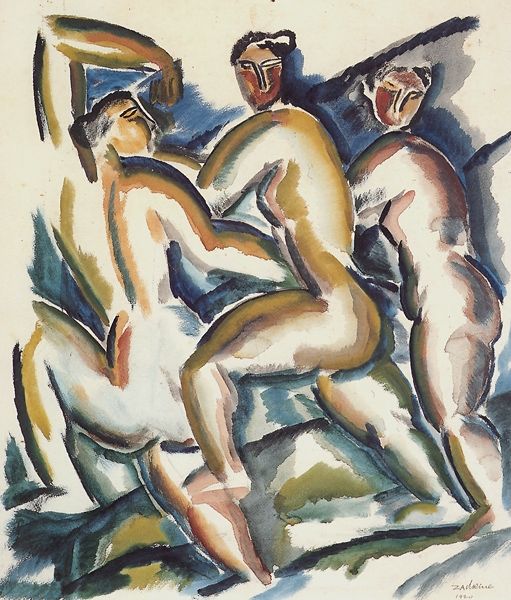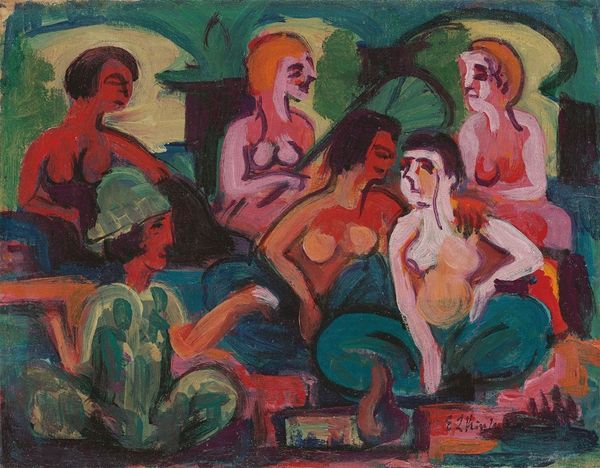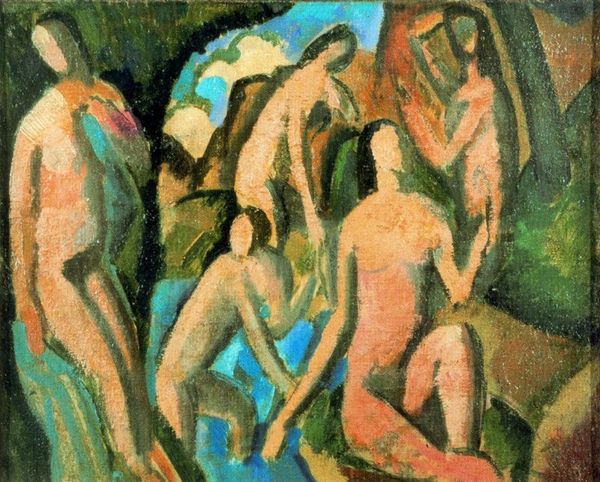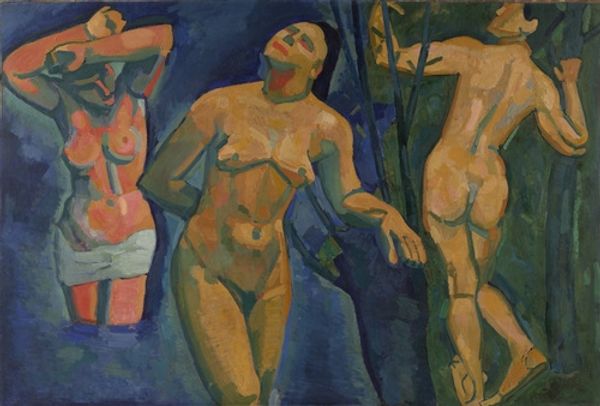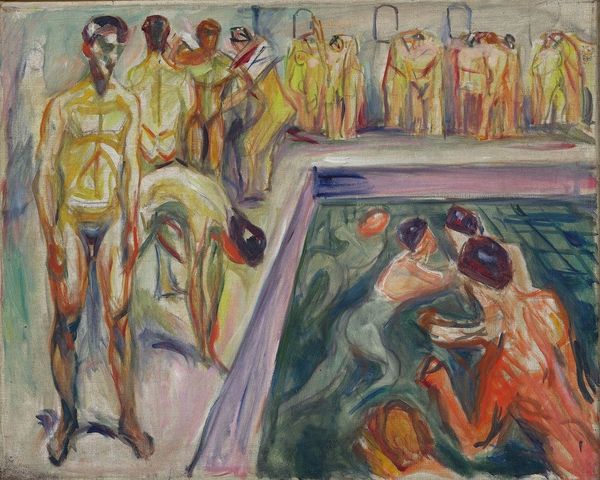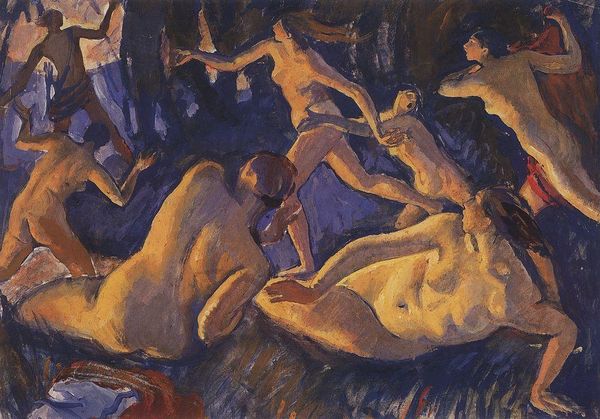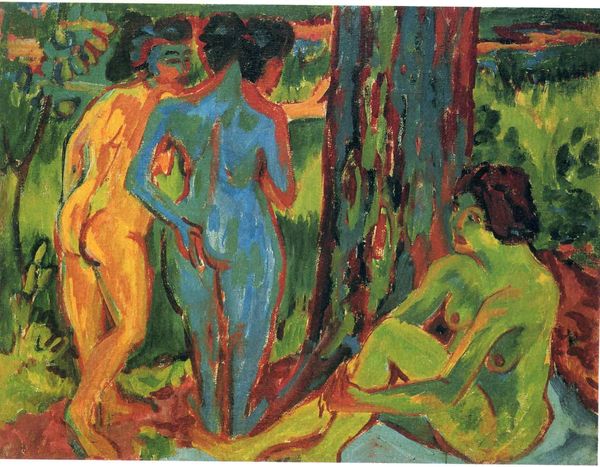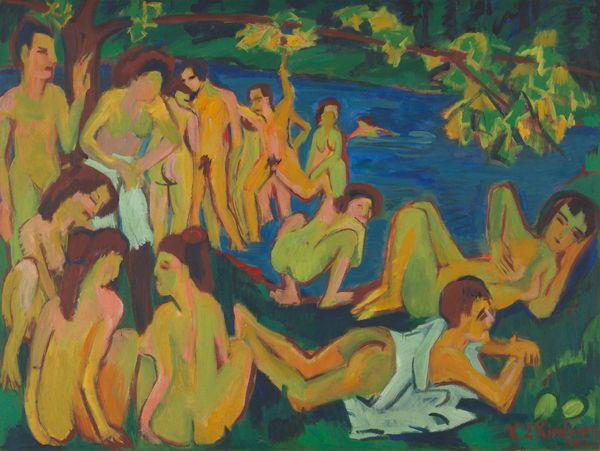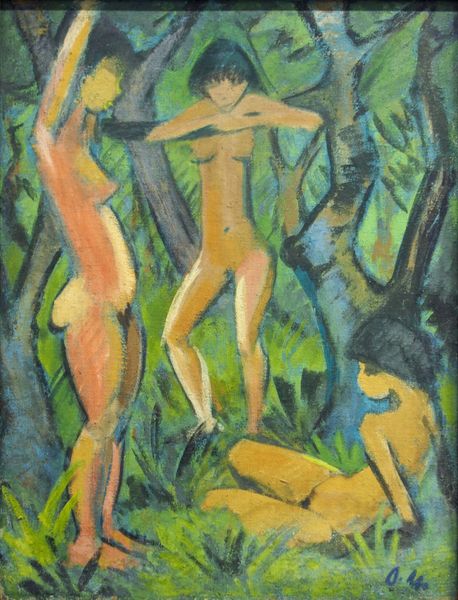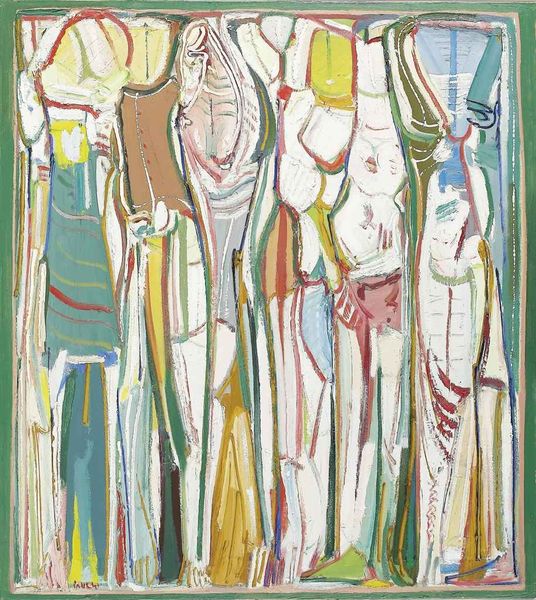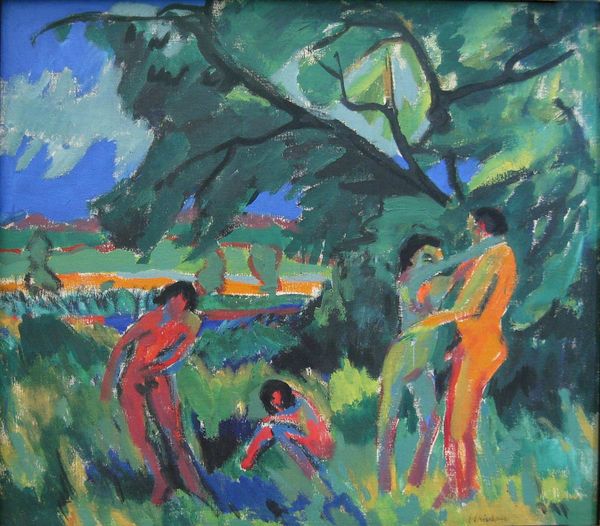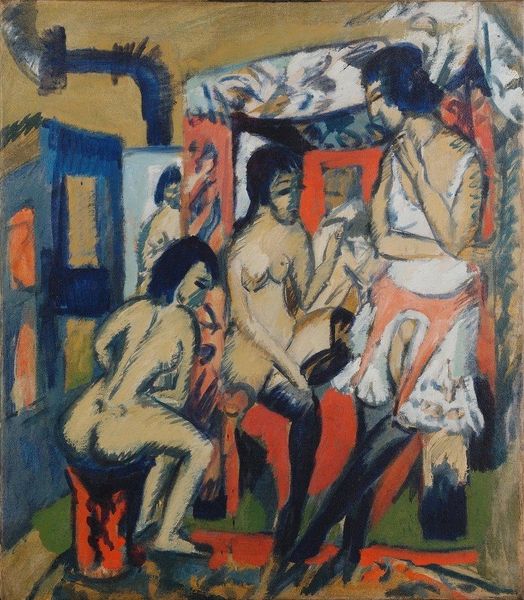
Copyright: Public Domain: Artvee
Editor: So this is Edvard Munch’s "Naked Men in Landscape," painted sometime between 1923 and 1930. The rough, almost primal brushstrokes, combined with the figures' poses, create a strangely unsettling mood, and of course it's painted in oil. What do you see in this piece? Curator: For me, this painting speaks volumes about the materials and process behind its creation, and therefore the intended consumption, which cannot be detached from the socio-historical context in which it was manufactured. Munch returned to plein-air painting later in his career, we can observe that in the rawness of the materials, visible in the hasty applications. This choice feels deliberate. Editor: Deliberate, how so? Curator: Well, think about what oil paint *meant* at this point. Commercially available pigments shifted the art world profoundly. Consider the production line – from pigment extraction to its ultimate destination. And the human body, particularly the nude male form. Consider that its portrayal in art has historically been coded and constrained. To juxtapose all this on one canvas, so viscerally. This is the point of consumption: what do all these aspects *mean* for those viewing this painting at the time, or now? Editor: So it's about highlighting the materiality of both the art itself and the subject within it? The means and material as essential elements in conveying expression. Curator: Precisely. Munch pushes those boundaries and wants to expose what goes into production and meaning-making, to ultimately evoke specific emotions in the viewer. It's an exploration of both making *and* reception, rather than simply image production. What are *your* thoughts regarding Munch’s aims with this piece, now? Editor: It encourages me to really consider how historical events are materialized, transformed into objects, experiences. It goes way beyond my first reaction. Thank you. Curator: My pleasure, let's move on.
Comments
No comments
Be the first to comment and join the conversation on the ultimate creative platform.
